Hola y bienvenidos a Madrid. Recently, we had the privilege of spending 10 days in the capital of Spain.
Its been on our radar for a while, after all this is a city renowned for its arts, cuisine, and nightlife.
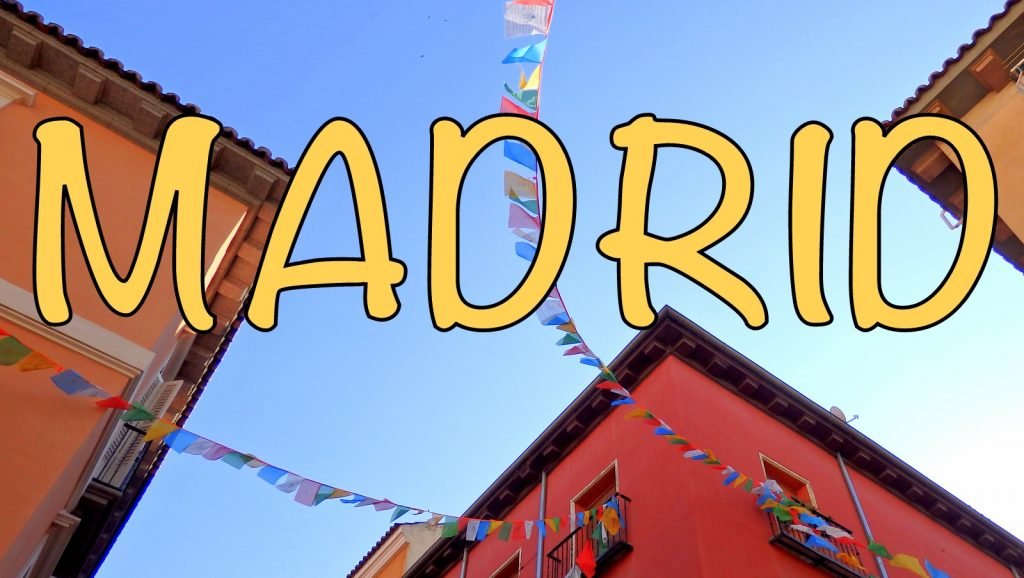
With such few days to spare, we decided to hit up some of the best sights and attractions and film a guide highlighting “25 things to do in Madrid.
In this video you can expect everything from lively markets and world renowned museums, to beautiful gardens and Spanish dishes.
Now let’s find out what the Spanish capital is all about!
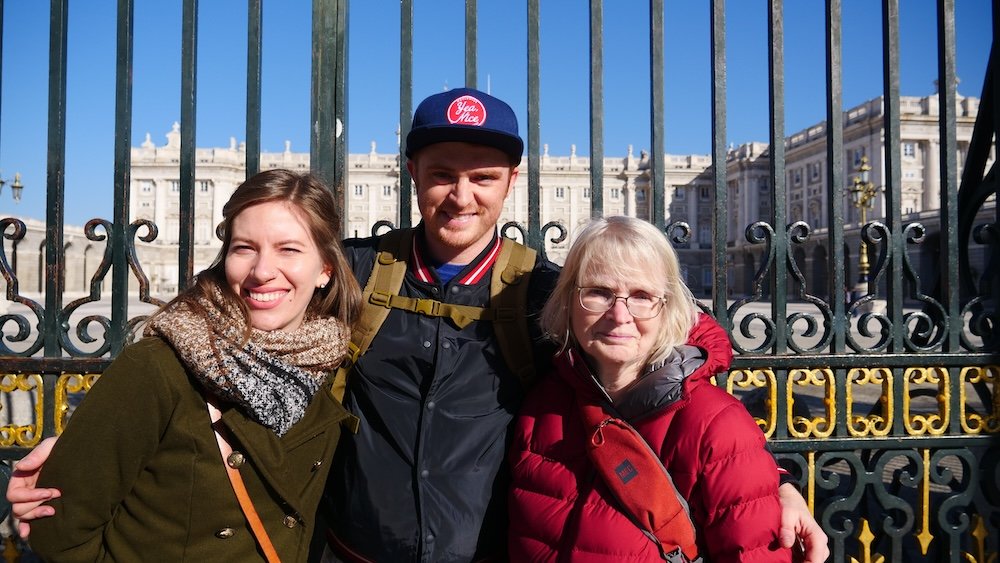
25 Things to do in Madrid Travel Guide

1) Real Jardín Botánico de Madrid – Royal Botanical Garden of Madrid
Visiting Real Jardín Botánico de Madrid (Royal Botanical Garden of Madrid) is a must when in Madrid. Why? Because it is a beautiful shaded space with a plethora of different plants from around the world. Founded in 1755 by King Ferdinand VI, this 20 acre garden is located at Plaza de Murillo beside the Prado Museum. Divided into seven major sections and five greenhouses it is simply massive and you’ll want to pickup a map to prevent getting lost. We ended up covering only a fraction of the 90,000 plants and flowers.
One of the most epic aspects of the Royal Botanical Garden is its ever-changing seasonal displays. Throughout the year, the garden transforms with the seasons, offering a new and breathtaking experience each time you visit. In spring, vibrant tulips and daffodils burst into bloom. Summer brings lush greenery and exotic blooms. Autumn showcases a stunning palette of red, orange, and yellow foliage. Even in winter, the garden has its own charm with winter-blooming plants and serene landscapes.
The Royal Botanical Garden is conveniently located near the Prado Museum in central Madrid. It’s easily accessible by public transport, with the nearest metro station being Atocha (Line 1). Several bus lines also stop nearby. If you’re exploring the city on foot, it’s a pleasant walk from many central locations.
Tips for Visitors
- Take Your Time: Don’t rush through the garden. Take the time to explore each section, read the informational signs, and appreciate the beauty of the plants.
- Join a Tour: Consider joining a guided tour to gain deeper insights into the garden’s history and the plants on display. Tours are often available in multiple languages.
- Enjoy the Greenhouses: Make sure to visit the greenhouses, as they house some of the most unique and exotic plants in the garden.
- Relax and Unwind: Use the garden as a place to relax and unwind. Find a quiet spot to sit, enjoy the surroundings, and let the tranquility of the garden wash over you.
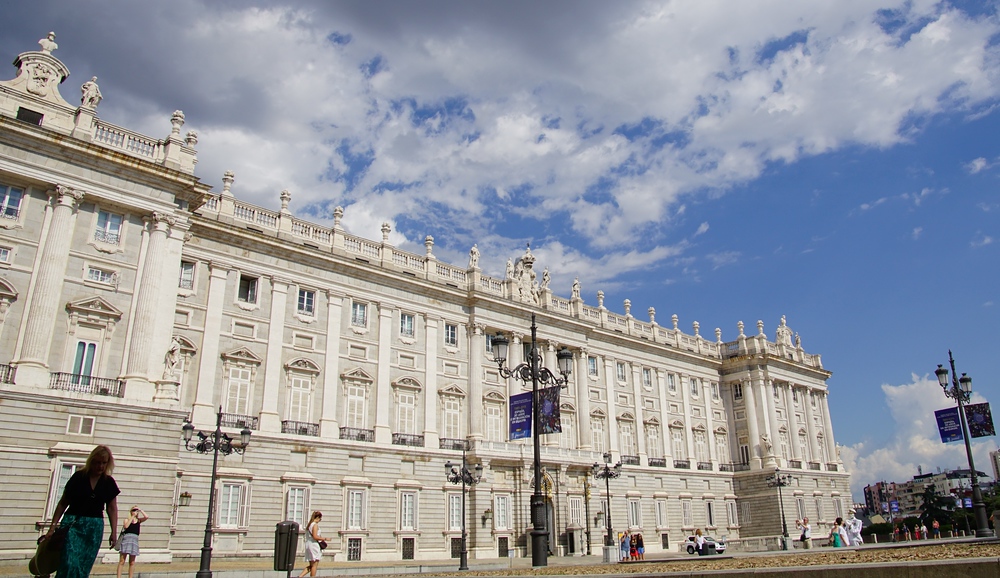
2) Palacio Real de Madrid – Royal Palace of Madrid
Palacio Real de Madrid is one of the largest palaces in all of Europe. Technically, this is the official residence of the Spanish Royal Family, however, they choose to live in a smaller and more modest palace in the outskirts of town. The Royal Palace is open to visitors year round and features a massive floorspace of 135,000 square meters featuring 3,400+ rooms! This is indeed the largest palace in Europe in terms of floor area and contains paintings by Francisco de Goya, Carvaggio and Anton Raphael Mengs to name just a few.
The Palacio Real is a masterpiece of Baroque architecture. Constructed in the 18th century on the site of the old Alcázar making it one of the largest palaces in Europe. One of the most epic aspects of the Palacio Real is the Throne Room. This room, with its red velvet walls, gilded decorations, and majestic chandeliers, is where the king meets with dignitaries and holds official ceremonies. The sheer grandeur of this room, combined with its historical significance, makes it a highlight of any visit.
The Palacio Real de Madrid is centrally located in the city nearest metro stations are Ópera (Lines 2 and 5) and Plaza de España (Lines 3 and 10). Several bus lines also serve the area, and if you’re exploring on foot, it’s a pleasant walk from many central locations.
Tips for Visitors
- Take Your Time: The palace is vast, and there’s a lot to see. Allow yourself plenty of time to explore each room and soak in the details.
- Join a Guided Tour: A guided tour can provide valuable context and deeper insights into the palace’s history and significance. Tours are available in multiple languages.
- Explore the Gardens: Don’t miss the opportunity to stroll through the Campo del Moro and Sabatini Gardens. They offer a peaceful retreat and beautiful photo opportunities.
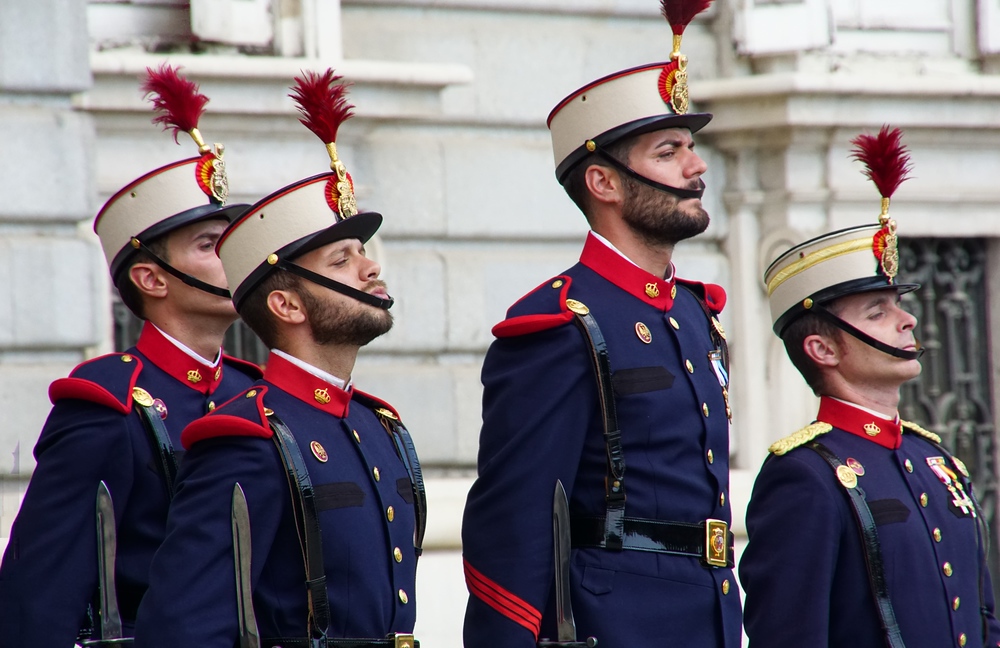
3) Changing of the Guard at Madrid’s Palacio Real
So another thing you can do at the palace is check out the changing of the guard. We were there at eleven o’clock and that is when it started. If you’d like to attend show up on Wednesdays between 11:00 to 14:00.
This ceremony dates back to the 16th century and has been carefully preserved to honor Spain’s rich military heritage. The soldiers, dressed in their immaculate uniforms, perform intricate drills with absolute precision. The choreography, the vibrant colors of the uniforms, and the solemnity of the event create a spectacle.
The ceremony takes place in the grand courtyard of the Royal Palace. The grandeur of the palace, combined with the formal ceremony, creates an awe-inspiring atmosphere.
To get the best view of the Changing of the Guard, it’s advisable to arrive early. The ceremony takes place in the courtyard of the Royal Palace, and getting there ahead of time ensures you secure a good spot. The palace’s central location makes it easily accessible, with the nearest metro station being Ópera (Lines 2 and 5). Several bus lines also serve the area.
Tips for Visitors
- Arrive Early: To get a prime viewing spot, arrive at least 30 minutes before the ceremony starts.
- Respect the Ceremony: The Changing of the Guard is a formal event. Be respectful of the ceremony and those around you.
- Explore the Palace: After the ceremony, consider exploring the Royal Palace. A tour of the palace’s opulent rooms and historical artifacts complements the experience.
4) Jardines de Sabatini – The Sabatini Gardens
One thing that we kept noticing about our stay in Madrid was that they love their gardens and their parks. Jardines de Sabatini was a beautiful place to visit and there were hardly any tourists compared to other areas of the Royal Palace. Only opened to the public in 1978 they honor the name of Francesco Sabatini, an Italian architect who designed several features of the palace.
The gardens were developed in the 1930s on the site of the former royal stables. They are part of the larger Palacio Real complex, adding to their historical significance. Hence, the gardens are designed to frame the palace perfectly, providing stunning vistas that are ideal for photography or simply admiring the architecture.
Jardines de Sabatini is centrally located, making it easily accessible. The nearest metro stations are Ópera (Lines 2 and 5) and Plaza de España (Lines 3 and 10). Several bus lines also stop nearby. Additionally, nit’s a pleasant walk from many central locations, including Gran Via and Puerta del Sol.
Tips for Visitors
- Take Your Time: The gardens are best enjoyed at a leisurely pace. Take your time to explore each section and appreciate the details.
- Explore Different Angles: Walk around and view the palace and gardens from different angles to fully appreciate the design and layout.
- Combine with a Palace Visit: Visiting the Royal Palace and the Sabatini Gardens together offers a comprehensive experience of Madrid’s royal heritage.
5) Teleférico de Madrid – Madrid’s Cable Car
To view Madrid from high above take an eleven minute cable car journey on the Teleférico de Madrid. This two and a half kilometer ride starts on the Paseo del Pintor Rosales street and finishes at Casa de Campo park. From the higher vantage point you’ll have a unique view of many of the city’s famous landmarks while also getting to marvel at all of the green space.
The Teleférico de Madrid offers a vantage point like no other. As you ascend, the city’s sprawling urban landscape unfolds beneath you. From the bustling streets to the serene parks, you get a comprehensive view that you can’t experience from the ground.
As you glide over the city, you’ll see iconic landmarks like the Royal Palace, Almudena Cathedral, and the lush greenery of Casa de Campo. The expansive vistas and the sense of floating above the city make this experience truly unforgettable. Sunrise and sunset rides are particularly spectacular, offering a golden view of Madrid bathed in beautiful light.
To reach the Teleférico de Madrid, head to the starting point at Paseo del Pintor Rosales. The closest metro stations are Argüelles and Moncloa, both within walking distance. Several bus lines also stop nearby, making it easy to get to the cable car from different parts of the city.
Tips for Visitors
- Plan Ahead: Check the operating hours and any maintenance schedules on the Teleférico de Madrid’s official website before your visit.
- Arrive Early: To avoid long lines, especially on weekends and holidays, try to arrive early in the day.
- Explore Casa de Campo: After your cable car ride, take some time to explore Casa de Campo, Madrid’s largest park, offering hiking trails, a lake, and even a zoo.
6) Rosaleda del parque del Oeste – Rosaleda Garden
La Rosaleda is a massive rose garden located in the west end of the city. The various roses are divided by variety, class or color in sectioned rose beds. Every year during the month of May a contest is held to select the most beautiful rose of them all. We missed the contest by a couple of months, but we still enjoyed wandering through the grounds.
Nestled in the lush Parque del Oeste, this garden is a must-visit for anyone who appreciates the beauty of flowers and the serenity of a well-kept garden. The garden is a botanical paradise, home to over 20,000 rose bushes representing more than 600 varieties.
The garden’s design is a masterpiece of landscape architecture. The roses are arranged in planned beds, with winding paths leading you through the colorful displays. Fountains, pergolas, and statues add to the charm.
To visit the garden heads to metro station Argüelles (Lines 3, 4, and 6), which is just a short walk away. If you’re exploring on foot, it’s a pleasant walk from the nearby attractions like the Temple of Debod and Plaza de España.
Tips for Visitors
- Take Your Time: The garden is best enjoyed at a leisurely pace. Take your time to explore each section and appreciate the details of the roses.
- Plan for Relaxation: Find a quiet spot to sit and enjoy the scenery. The garden’s benches and shaded areas are perfect for a relaxing break.
- Combine with Nearby Attractions: Consider combining your visit to the Rosaleda Garden with nearby attractions like the Temple of Debod or the Cable Car to make the most of your day in Parque del Oeste.
7) Gazpacho – Cold Spanish tomato soup
Meals were a big highlight during our visit to Madrid, especially gazpacho! Given that most days were around 40 degrees this cold, refreshing and tangy tomato soup helped us to cool down. Featuring chopped bell peppers, green peppers and onion you’ll also notice olive oil drizzled on top. It is so good we had it over and over again.
Originating from Andalusia, this cold soup has become a staple across Spain, particularly popular during the hot summer months. Its cool, smooth texture and tangy, savory flavor make it the perfect antidote to the heat. Served ice-cold, this soup is incredibly refreshing, hydrating, and satisfying.
The best versions of gazpacho are made with ripe, juicy tomatoes, crisp cucumbers, vibrant bell peppers, onions, garlic, olive oil, vinegar, and a hint of salt. The simplicity and purity of these ingredients make gazpacho a standout dish.
Gazpacho’s versatility adds to its epic status. While the traditional recipe is a classic, there are countless variations to explore. Some versions incorporate fruits like watermelon or strawberries for a unique twist, while others add herbs or spices for an extra kick.
Tips for Visitors
- Try Different Variations: Don’t hesitate to try different versions of gazpacho. Each place may have its unique twist, offering a new flavor experience.
- Pair with Tapas: Gazpacho pairs wonderfully with a variety of tapas. Consider ordering a selection of small plates to enjoy alongside your soup for a full culinary adventure.
- Ask Locals for Recommendations: Locals often know the best places to find authentic gazpacho. Don’t be afraid to ask for recommendations to discover hidden gems.
8) Museo del Prado (Museo Nacional del Prado) – Prado Museum
The Prado museum holds one of the best collections of Spanish art. They have works by artists like Francisco de Goya, Diego Velazquez, and El Greco. Admission to the museum is free in the evenings 2 hours before closing, but you’ll need few days to cover everything this museum has to offer.
The Prado Museum is home to an extensive collection of over 8,000 paintings and 700 sculptures. It features works from some of the most renowned artists in history. From the dramatic canvases of Francisco Goya to the meticulous detail of Diego Velázquez and the vibrant colors of Peter Paul Rubens, the museum’s collection offers a comprehensive overview of European art from the 12th to the early 20th century.
Founded in 1819, the Prado Museum itself is a historical landmark. You can stand inches away from Velázquez’s “Las Meninas,” Goya’s “The Third of May 1808,” and Hieronymus Bosch’s “The Garden of Earthly Delights.” The spacious galleries, high ceilings, and natural lighting create an ideal environment for appreciating the art. What Makes It a Great Experience for Visitors?
The Prado Museum is easily accessible and surrounded by other cultural attractions, including the Reina Sofia and Thyssen-Bornemisza museums, forming the “Golden Triangle of Art.” The nearest metro stations are Banco de España (Line 2) and Atocha (Line 1).
Tips for Visitors
- Plan Your Visit: With so much to see, it’s helpful to plan your visit in advance. Focus on the highlights and must-see works to make the most of your time.
- Take Breaks: The museum is vast, so take breaks to rest and absorb what you’ve seen. The museum’s cafes and seating areas provide comfortable spots to relax.
- Use the Resources: Take advantage of the museum’s resources, such as audio guides and informational booklets, to enhance your understanding and enjoyment of the collections.
9) El Retiro (Parque del Buen Retiro) – The Buen Retiro Park
Parque del Buen Retiro is a massive park in Madrid. It has beautiful boulevards for strolling, a large pond where you can rent row boats, and plazas with trees that will make you feel like you’ve stumbled into Alice in Wonderland. We ended up taking numerous breaks in the shade because summer in Madrid feels like someone has turned on the blow-dryer and they’re just blowing it all over your body. It is like a wall of hot air hitting you in the face. This massive park helps you to escape that a little bit 😉
Originally designed as a royal retreat in the 17th century, it was opened to the public in the late 19th century. The park’s rich history is evident in its grand monuments, statues, and well-preserved architectural gems. Spanning over 125 hectares, El Retiro is a green oasis in the heart of Madrid.
One of the most epic aspects of El Retiro is the grand Monument to Alfonso XII. This stunning colonnade, overlooking the park’s large artificial lake, is a sight to behold. Visitors can rent rowboats to paddle around the lake, offering a unique perspective of the monument.
Another highlight is the Crystal Palace. This magnificent glass and iron structure was built in 1887 to house exotic plants as part of an exhibition on the Philippines, then a Spanish colony. Today, it hosts contemporary art exhibitions under the management of the Reina Sofia Museum.
Tips for Visitors
- Explore the Corners: While the main attractions are stunning, don’t miss the quieter, less-traveled paths of the park. These areas offer serene spots and hidden gems.
- Rent a Boat: For a unique experience, rent a rowboat on the lake. It’s a fun and scenic way to enjoy the park from a different perspective.
- Check for Events: Look up any events or exhibitions happening during your visit. El Retiro frequently hosts cultural events that can enrich your experience.
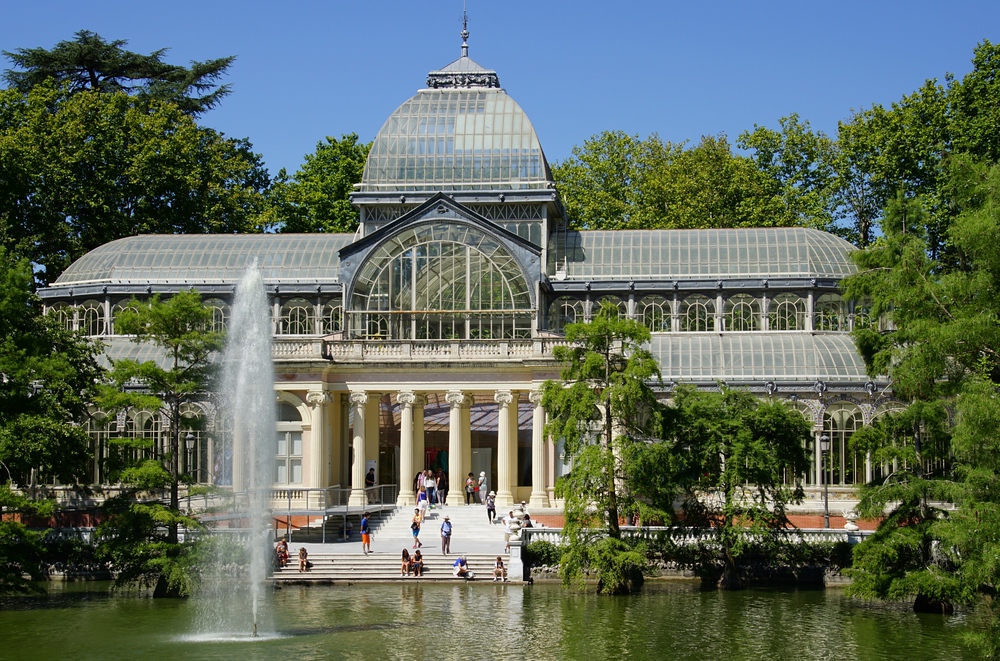
10) Palacio de Cristal – Crystal Palace
One attraction you shouldn’t miss when visiting Parque del Retiro is the Crystal Palace. It’s a beautiful building that streams in natural sunlight, and on occasion they host contemporary art exhibitions. It was originally built back in 1887 to house fauna and flora all the way from the Philippines.
The structure, made almost entirely of glass and iron, creates a luminous and airy space. Exploring this architectural marvel gives you a deep appreciation for historical design and engineering. Managed by the Reina Sofia Museum, it hosts contemporary art exhibitions that change throughout the year.
The all-glass structure allows natural light to flood in, creating a dazzling effect as it reflects off the glass panels. The surrounding trees and the nearby lake enhance the palace’s picturesque setting. If you’re exploring on foot, it’s a pleasant walk from other central locations like the Prado Museum and Puerta de Alcalá.
Tips for Visitors
- Explore the Surroundings: Take time to explore the surrounding areas of Parque del Buen Retiro. The park itself is filled with beautiful gardens, statues, and other attractions worth visiting.
- Check Exhibition Schedules: Look up the current exhibitions at the Crystal Palace before your visit to make the most of the art installations.
- Relax and Enjoy: The Crystal Palace is a place to relax and enjoy the beauty around you. Find a quiet spot inside or outside and take in the peaceful ambiance.
11) Palacio de Velázquez (Palacio de Exposiciones) – Velázquez Palace
Palacio de Velazquez is also located in the same park. It has red-brick-and-tile architecture, and inside you’ll find temporary exhibitions organized throughout the Reina Sofia museum. This large neoclassical red brick building was designed by Ricardo Velázquez.
Built between 1881 and 1883 for the Exposición Nacional de Minería (National Mining Exhibition), the Velázquez Palace is a masterpiece of 19th-century architecture. It features a striking combination of brick, iron, and glass, creating a light-filled, airy space.
One of the most epic aspects of Velázquez Palace is the caliber of its exhibitions. The palace has hosted works by some of the most influential artists of our time, including retrospectives and themed exhibits that offer deep dives into various art movements. The ever-changing nature of the exhibitions means there’s always something new and exciting to see.
Tips for Visitors
- Explore the Surroundings: Take time to explore Parque del Buen Retiro. The park itself is filled with beautiful gardens, statues, and other attractions worth visiting.
- Check Exhibition Schedules: Look up the current exhibitions at the Palacio de Velázquez before your visit to make the most of the art installations.
- Relax and Enjoy: The palace and its surroundings are perfect for relaxation. Find a quiet spot inside or outside and take in the peaceful ambiance.
12) Feria de libros cuesta de moyano – book fair
So if you’re in Madrid during the summer months you can check out this book fair which is located just behind the Botanical Gardens. Cuesta de Moyano is a little hill lined with book stands and you can pick up literature ranging from philosophy to fantasy, all for a couple of Euros.
With over 30 stalls lining the street, you’ll find a vast array of books ranging from rare and antique editions to contemporary novels and academic texts. It’s a place where you can spend hours browsing, discovering hidden gems and literary classics. Each stall has its own unique collection.
Established in the early 20th century, the Cuesta de Moyano has been a gathering place for book lovers for over a century. The charming wooden stalls and the street’s historic ambiance evokes a sense of nostalgia.
Tips for Visitors
- Take Your Time: Allow yourself plenty of time to browse and explore. The fair is best enjoyed at a leisurely pace, so you don’t miss any hidden gems.
- Ask for Recommendations: Don’t hesitate to ask stall owners for recommendations. They often have valuable insights and can guide you to interesting books you might overlook.
- Combine with Nearby Attractions: Make the most of your visit by exploring nearby attractions like Retiro Park and the Prado Museum. It’s a great way to create a full day of cultural and literary experiences.
13) Paella – Spain’s national dish (a Valencian rice dish)
We couldn’t come to the capital and not try Spain’s national dish: paella. This Valencian rice dish consists of rice, meat, seafood, green beans, saffron, rosemary, artichoke, olive oil and various other kinds of vegetables. You can get several different kinds; however, we recommend seafood. In terms of price you can expect to pay between 11 to 15 Euros at most restaurants and upwards to 30 at gourmet establishments. It is my favorite Spanish food, so I highly recommend it!
The dish is traditionally cooked in a wide, shallow pan over an open flame, allowing the rice to absorb the flavors of the ingredients. Each component contributes to the overall taste, creating a blend of savory, aromatic, and slightly smoky flavors.
Paella is typically served in large portions, making it perfect for sharing with friends or family. The communal aspect of paella dining enhances the overall experience.
Tips for Visitors
- Ask for Recommendations: Don’t hesitate to ask locals or restaurant staff for their recommendations on the best paella in the area.
- Pair with Local Wine: Enhance your meal by pairing your paella with a local Spanish wine. Many restaurants offer excellent wine lists featuring regional selections.
- Take Your Time: Paella is meant to be enjoyed slowly. Take your time to savor each bite and enjoy the company of your dining companions.
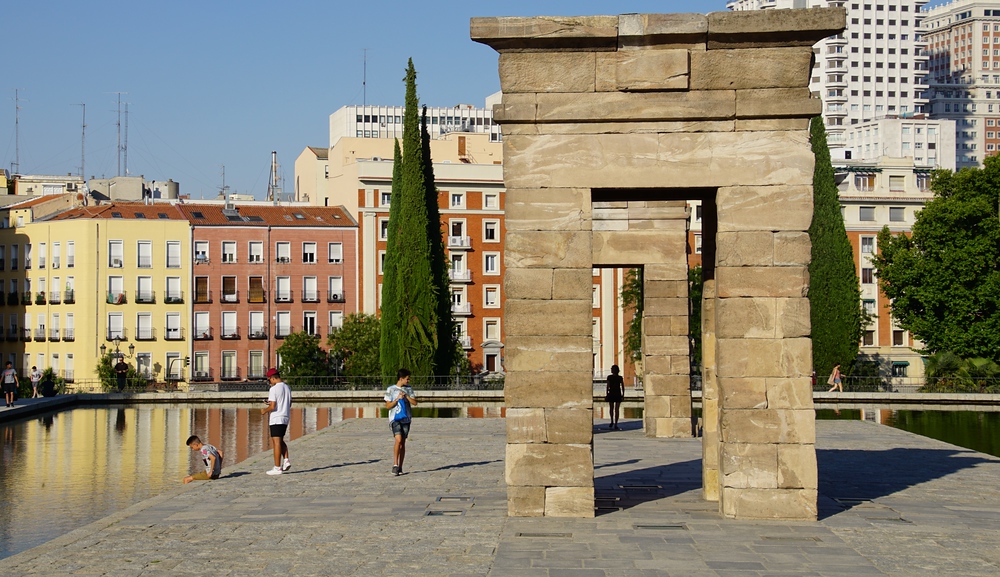
14) Templo de Debod – Temple of Debod Egyptian Temple
The Temple of Debod is an ancient Egyptian Temple located in Madrid. It wasn’t stolen by the Spaniards; in fact, it was given as a gift because they were building a dam in Egypt in the same area where the temple used to be located. At the time it was at risk of flooding so it was given as a gift in order to preserve it. Aside from visiting it you’ll also not it is one of the most popular places to watch sunset.
Originally built in the 2nd century BC in Aswan, Egypt, it was gifted to Spain in 1968 as a token of gratitude for their help in saving the temples of Abu Simbel. The relocation and reconstruction of this temple in Madrid provide a rare opportunity to experience authentic ancient Egyptian architecture outside of Egypt.
Situated in Parque del Oeste, near Plaza de España, the temple is perfectly positioned to offer some of the best views in Madrid. The elevated location provides a panoramic vista of the city, including the Royal Palace and the Almudena Cathedral. As the sun sets, the temple and its surroundings are bathed in a golden light.
The Temple of Debod is easily accessible and free to visit. The nearest metro stations are Plaza de España (Lines 3 and 10) and Ventura Rodríguez (Line 3).
Tips for Visitors
- Arrive Early: Arriving early ensures you get a good spot to view the sunset and gives you time to explore the temple without rushing.
- Respect the Site: Remember that the Temple of Debod is a historical monument. Be respectful of the site and follow any posted guidelines or restrictions.
- Explore the Surroundings: Take some time to explore Parque del Oeste. The park itself is beautiful and offers additional scenic views and relaxing spots.
15) Estadio Santiago Bernabéu – Santiago Bernabéu Stadium (Home of Real Madrid Club de Fútbol – Real Madrid C.F.)
Real Madrid football club is easily one of the most famous teams in the world not just in Spain. If you visit Santiago Bernabéu Stadium you’ll have an opportunity to watch a game during the season or take a tour of the stadium during the off-season. If time is short, at the very least, head to the team store and pickup a hat or a t-shirt.
Since its opening in 1947, it has hosted countless memorable matches, legendary players, and thrilling moments. You can explore the locker rooms where famous players prepare, walk through the players’ tunnel, and even step onto the pitch. The tour also includes access to the club’s trophy room, showcasing an impressive collection of silverware, including Champions League trophies, La Liga titles, and more.
One of the most epic aspects of visiting Santiago Bernabéu is experiencing a live game. The electric atmosphere, the roar of passionate fans, and the sight of world-class players competing on the pitch create an unforgettable experience – even if you’re not a diehard football fanatic.
Tips for Visitors
- Arrive Early: Arriving early gives you time to explore the area and ensures you’re not rushed during the tour. It also allows you to soak in the atmosphere before the crowds arrive.
- Check the Schedule: Before your visit, check the stadium’s schedule for any special events or matchdays that might affect tour availability.
- Explore the Surroundings: The area around the stadium has plenty of cafes, shops, and restaurants. Take some time to explore and enjoy the local vibe.
16) Enjoying Madrid’s nightlife
Madrid has legendary nightlife. In a word it is pulsating. Around midnight things are just barely getting started. If you’re going to party like a local you’ll be out until four or five in the morning. We had the pleasure of experiencing a few wild nights out on the town with some good friends who are now calling Madrid home.
The variety of venues in Madrid’s nightlife scene is astounding. From traditional flamenco shows and cozy jazz clubs to buzzing nightclubs and rooftop bars with stunning views, the options are endless. This diversity means that no two nights out in Madrid are the same. You can start with a quiet dinner in a tapas bar, enjoy live music in a trendy lounge, and end the night dancing in a top nightclub.
The city’s tapas culture means that delicious food is always part of the night out. From traditional Spanish dishes like patatas bravas and jamón ibérico to modern fusion cuisine, there’s something to tickle your fancy.
Tips for Visitors
- Pace Yourself: With nightlife that can last until dawn, it’s important to pace yourself. Enjoy drinks and food at a leisurely pace to make the most of the night.
- Explore Different Areas: Each neighborhood offers a different vibe. Spend time exploring various areas to get a full picture of Madrid’s nightlife.
- Stay Safe: Stick to well-lit areas, keep an eye on your belongings, and use reliable transportation options to get back to your accommodation safely.
17) Mercado de San Miguel – Market of San Miguel
The San Miguel Market is the place to come if you want to sample a wide array of Spanish dishes all under one roof. You’ll find everything ranging from seafood to meats and sausages, as well as glasses of Sangria and Tinto de Verano.
With over 30 stalls offering a diverse array of Spanish delicacies, it’s a place where you can sample the best of Madrid’s food scene in one location. From traditional tapas and fresh seafood to artisan cheeses and gourmet pastries, the market has it all.
Opened in 1916, Mercado de San Miguel retains its historical charm with its iron structure and glass walls. The market has been beautifully restored, preserving its early 20th-century architecture while incorporating modern amenities. The nearest metro stations are Sol (Lines 1, 2, and 3) and Opera (Lines 2 and 5), both within a short walking distance.
Tips for Visitors
- Start with a Walk-Through: Begin your visit with a walk-through to get a sense of what’s available. This helps you plan your tasting journey and decide which vendors to visit.
- Try a Little Bit of Everything: Don’t be afraid to sample small portions from multiple vendors. This allows you to experience a wider range of flavors and dishes.
- Engage with Vendors: Ask vendors for recommendations and insights. They are often passionate about their products and can enhance your experience with their knowledge and enthusiasm.
18) Plaza Mayor de Madrid – Plaza Mayor of Madrid
Plaza Mayor is Madrid’s central square and it is lined with little cafes and restaurants. It’s a nice place to enjoy a cup of coffee and do a bit of people watching, but you will pay a lot more than you would elsewhere in the city.
Originally built in the 16th century during the reign of Philip III the plaza has witnessed countless historical events – from royal ceremonies to bullfights. The square is framed by elegant, three-story buildings with charming balconies, intricate frescoes, and grand arches. The Casa de la Panadería, with its stunning facade, stands out as a focal point.
It’s a place where you can experience the local culture firsthand, whether it’s watching a traditional flamenco performance, enjoying a puppet show, or simply people-watching. The nearest metro stations are Sol (Lines 1, 2, and 3) and Ópera (Lines 2 and 5), both within a short walking distance.
Tips for Visitors
- Explore the Surroundings: Take time to explore the nearby streets and alleys. The area around Plaza Mayor is filled with charming shops, historic sites, and other attractions worth visiting.
- Enjoy the Local Cuisine: Don’t miss the opportunity to try the local food. Sit at an outdoor cafe, order a selection of tapas, and enjoy the culinary delights with a view.
- Stay Safe: Plaza Mayor is generally safe, but as with any popular tourist spot, keep an eye on your belongings and be mindful of pickpockets.
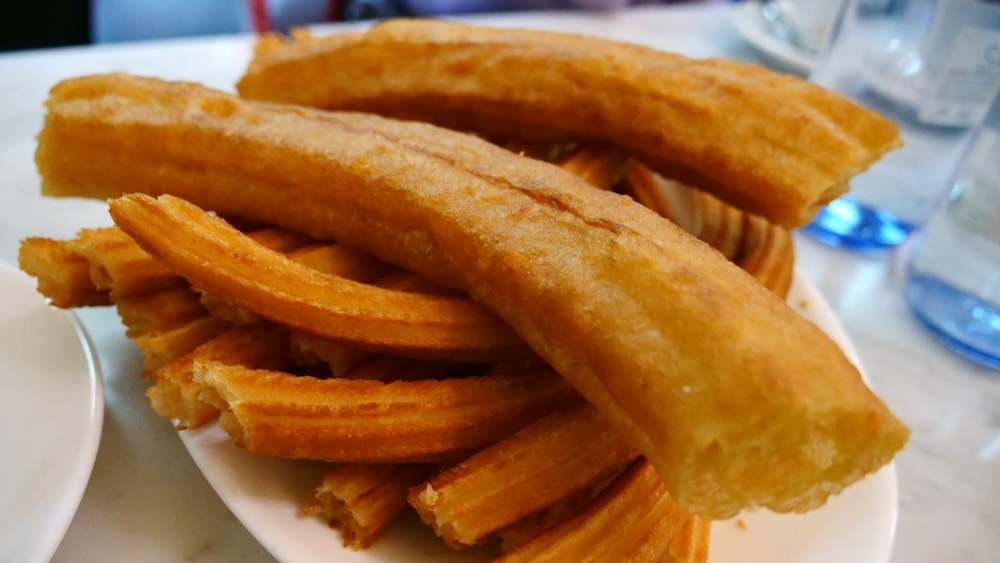
19) Churros – Eating a Spanish Donut (Spanish fried-dough pastry)
If you’ve got a bit of a sweet tooth be sure to indulge in churros. These Spanish fried-dough pastry is a popular way to start your morning with locals. Order it with a cup of hot chocolate, which when served is more like thick sludge. Any attempt at losing weight while in Madrid was thwarted by these delicious Spanish doughnuts.
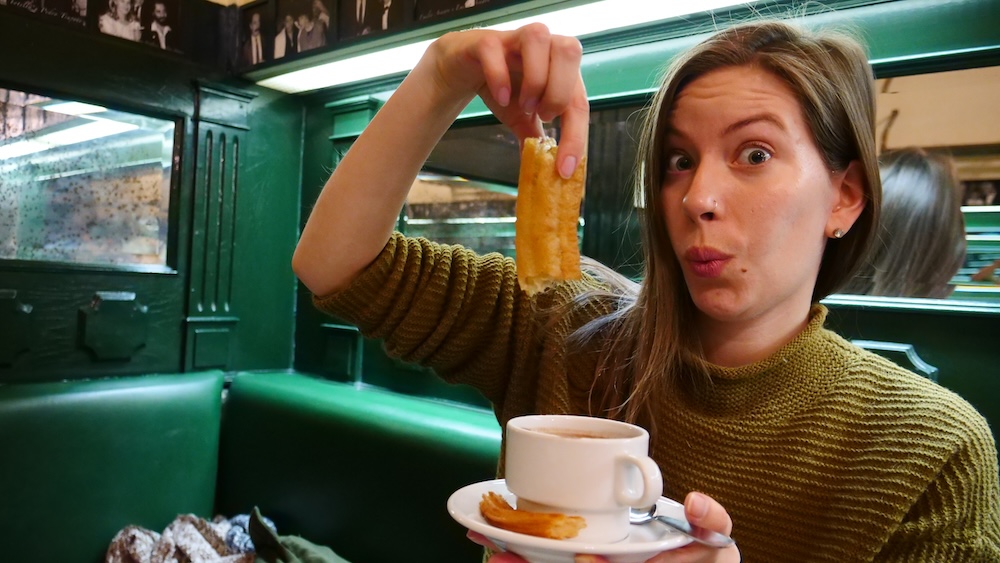
Imagine biting into a warm, crispy pastry, perfectly golden on the outside and soft on the inside, dusted with sugar and paired with a rich, velvety chocolate sauce. Originating in Spain, these delightful pastries have become a staple in Spanish cuisine, enjoyed for breakfast, as a snack, or even as a late-night treat.
There’s something incredibly comforting about churros. The combination of the crispy exterior and the soft, airy interior makes each bite a delightful contrast of textures. Dipping churros in thick, warm chocolate adds a layer of indulgence that is nothing short of legendary.
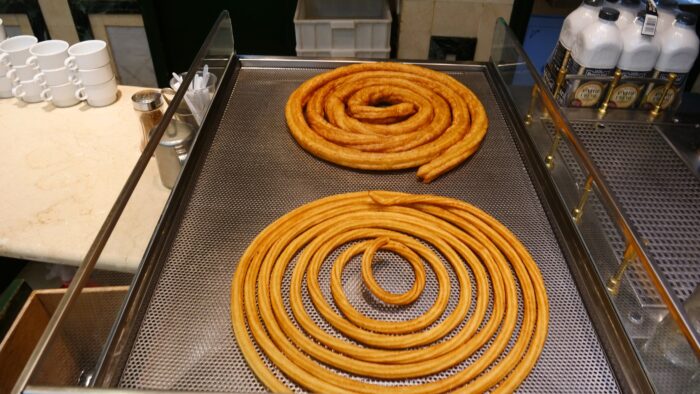
Tips for Visitors
- Start with the Classics: For your first churros experience, stick to the classic churros y chocolate. It’s the most traditional and beloved way to enjoy them.
- Share with Friends: Churros are best enjoyed with others. Order a large plate to share and make it a social experience.
- Try Different Variations: Once you’ve tried the classics, explore different variations like filled churros or ones sprinkled with cinnamon sugar for a new twist.
20) Puerta del Sol – Gate of the Sun
Puerta del Sol means Gate of the Sun and it is one of the busiest spots in Madrid. It’s a great spot to do a bit of shopping, catch a street performance, and then grab a quick bite.
It has been the stage for many significant events in Spanish history, from revolts and demonstrations to New Year celebrations. Here, you can find the famous clock tower at the Real Casa de Correos, where thousands gather each year to count down to midnight on New Year’s Eve.
As the literal center of Spain, Puerta del Sol is where all roads lead. Day or night, the square is alive with activity. Street performers, musicians, and artists add to the lively ambiance, creating a dynamic and engaging environment.
The Puerta del Sol metro station is one of the city’s busiest, served by Lines 1, 2, and 3. Numerous bus routes also pass through the square.
Tips for Visitors
- Stay Alert: Puerta del Sol is a busy area, so keep an eye on your belongings to avoid pickpockets.
- Explore Nearby Streets: Take time to wander the nearby streets and discover hidden gems, including shops, cafes, and historical sites.
- Join a Tour: Consider joining a walking tour to learn more about the history and significance of Puerta del Sol and its surrounding areas.
21) Santa María la Real de La Almudena – Almudena Cathedral
La Almudena is a catholic church which sits directly across from the Royal Palace. The church is open to visitors free of charge, but a small donation is suggested to upkeep the building.
Almudena Cathedral is an architectural masterpiece that took over a century to complete. The cathedral’s construction began in the late 19th century and was finally consecrated by Pope John Paul II in 1993.
The exterior features a neoclassical style that harmonizes beautifully with the adjacent Royal Palace. While the interior boasts a mix of Gothic and modern elements.
The nearest metro station is Ópera (Lines 2 and 5), and several bus routes stop nearby. If you’re exploring on foot, it’s a short walk from other major attractions like Plaza Mayor and Puerta del Sol.
Tips for Visitors
- Explore the Crypt: Don’t miss the cathedral’s crypt, which is often quieter and offers a beautiful and peaceful experience.
- Climb the Dome: Make the effort to climb to the dome for unparalleled views of Madrid.
- Take Your Time: Allow yourself plenty of time to explore the cathedral thoroughly, soaking in the details and the serene atmosphere.
22) Plaza de Oriente – Orient Plaza
For yet another impressive garden, come check out the Plaza de Oriente which is located beside the Royal Palace. Imagine stepping into a beautifully landscaped plaza, surrounded by historical monuments and elegant gardens.
It was commissioned by King Joseph Bonaparte in the early 19th century, though its current design was completed in the mid-20th century. The plaza is surrounded by significant landmarks, including the Royal Palace, the Royal Theater, and the Almudena Cathedral.
The square features a symmetrical layout with neatly arranged gardens, statues of Spanish monarchs, and a central monument dedicated to King Philip IV. The Royal Palace, with its grand facade, provides a stunning backdrop, enhancing the plaza’s majestic ambiance.
The nearest metro station is Ópera (Lines 2 and 5), which is just a short walk from the plaza. If you’re exploring on foot, Plaza de Oriente is a pleasant walk from other major attractions like Plaza Mayor and Puerta del Sol.
Tips for Visitors
- Explore the Gardens: Take time to explore the different sections of the gardens, each offering unique views and features.
- Visit the Royal Palace: Combine your visit to Plaza de Oriente with a tour of the Royal Palace for a comprehensive royal experience.
- Enjoy a Performance: Check the schedule at the Royal Theater and consider attending an opera or ballet performance to enhance your cultural experience.
23) Tortilla Española (Tortilla de patatas) – Spanish Omelette
For breakfast in Madrid have a madrileño which is the local Spanish option that everybody likes to eat in the city. Tortilla is a potato and egg type of dish that looks more like an omelette than anything else. It typically comes with a side of bread, juice and/or coffee. It was Audrey’s favorite breakfast and on her birthday she ate it three times!
It can be enjoyed hot or cold, as a main course, a side dish, or even a tapa. The classic recipe is simple – just potatoes, eggs, olive oil, and salt – but it can be adapted with additional ingredients like onions, chorizo, or bell peppers.
Tortilla Española is widely available and affordable, making it accessible to all visitors. You can find it in nearly every tapas bar, restaurant, and cafe in Madrid.
Tips for Visitors
- Ask for Recommendations: Don’t hesitate to ask locals or the staff for their recommendations on where to find the best tortilla.
- Try Different Variations: While the classic tortilla is a must, also try variations with onions (tortilla de patatas con cebolla) or other ingredients to experience different flavors.
- Pair with Local Beverages: Enjoy your tortilla with a glass of local wine, a cold beer, or a refreshing tinto de verano for a complete Spanish experience.
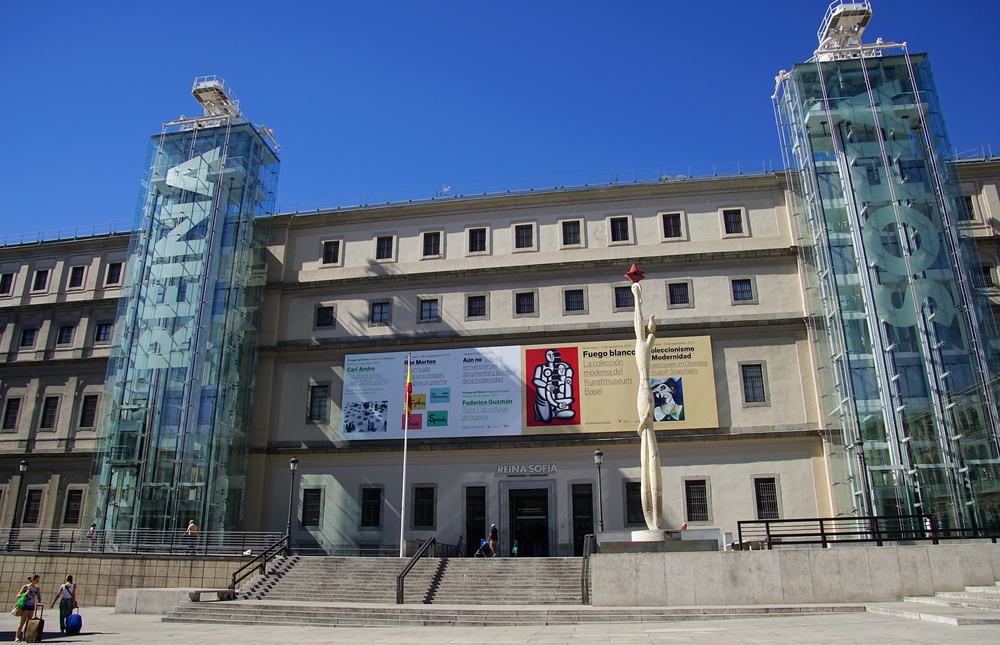
24) Museo Reina Sofía (Museo Nacional Centro de Arte Reina Sofía) – Queen Sofía Museum
The Queen Sofia museum focuses on 20th-century art. It forms part of the Golden Triangle of Art, which also includes the Prado and the Thyssen. Located in a former hospital building with a stunning glass façade, the museum offers a rich cultural experience that’s a must-visit for art lovers and curious travelers alike. Museo Reina Sofía features works by renowned artists such as Pablo Picasso, Salvador Dalí, and Joan Miró.
The museum’s centerpiece is Picasso’s “Guernica,” a powerful mural-sized painting that stands as one of the most significant anti-war artworks of the 20th century. This monumental painting, created in response to the bombing of the Basque town of Guernica during the Spanish Civil War, is a powerful symbol of the horrors of war and the resilience of the human spirit.
Museo Reina Sofía is located at Calle de Santa Isabel, 52 with the nearest metro station being Atocha (Line 1).
Tips for Visitors
- Purchase Tickets in Advance: To save time, buy your tickets online in advance. This also allows you to secure entry for specific time slots.
- Take Advantage of Free Admission: The museum offers free admission on certain days and times. Check the schedule to take advantage of this opportunity.
- Explore the Surroundings: After your visit, take a stroll through the nearby Retiro Park or enjoy a meal at one of the local cafes. The area around the museum is full of interesting sights and dining options.
25) Museo Thyssen-Bornemisza – Thyssen-Bornemisza Museum
You can also visit Thyssen-Bornemisza, an art museum in the city that was once the second largest private collection in the world. Nestled between the Prado and Reina Sofía museums, the Thyssen offers a unique collection that complements its neighbors, making it an essential stop for art lovers.
The Thyssen boasts an incredibly diverse collection, featuring over 1,000 works that cover a wide range of periods and styles. From medieval altarpieces to 20th-century avant-garde, the museum offers a comprehensive journey through Western art history. Highlights include pieces by iconic artists such as Van Gogh, Monet, and Picasso.
Unlike the expansive Prado, the Thyssen offers a more intimate and accessible setting. The galleries are well-organized and less crowded, allowing you to appreciate the art at a leisurely pace.
Museo Thyssen-Bornemisza is centrally located on Paseo del Prado, making it easily accessible by public transport. The nearest metro station is Banco de España (Line 2), and several bus lines stop nearby.
Tips for Visitors
- Buy Tickets in Advance: To save time, purchase your tickets online in advance. This also allows you to secure entry for specific time slots.
- Use the Audio Guide: Enhance your visit with the museum’s audio guide, which provides detailed insights into the artworks and their history.
- Explore Temporary Exhibitions: Don’t miss the temporary exhibitions, which often feature thematic collections and contemporary works that complement the permanent collection.
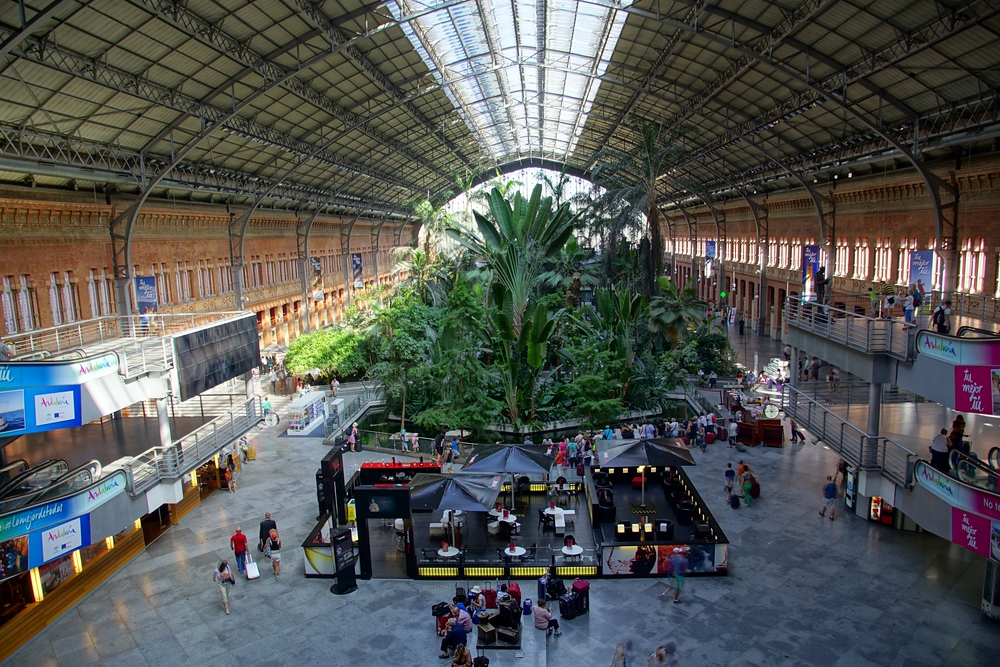
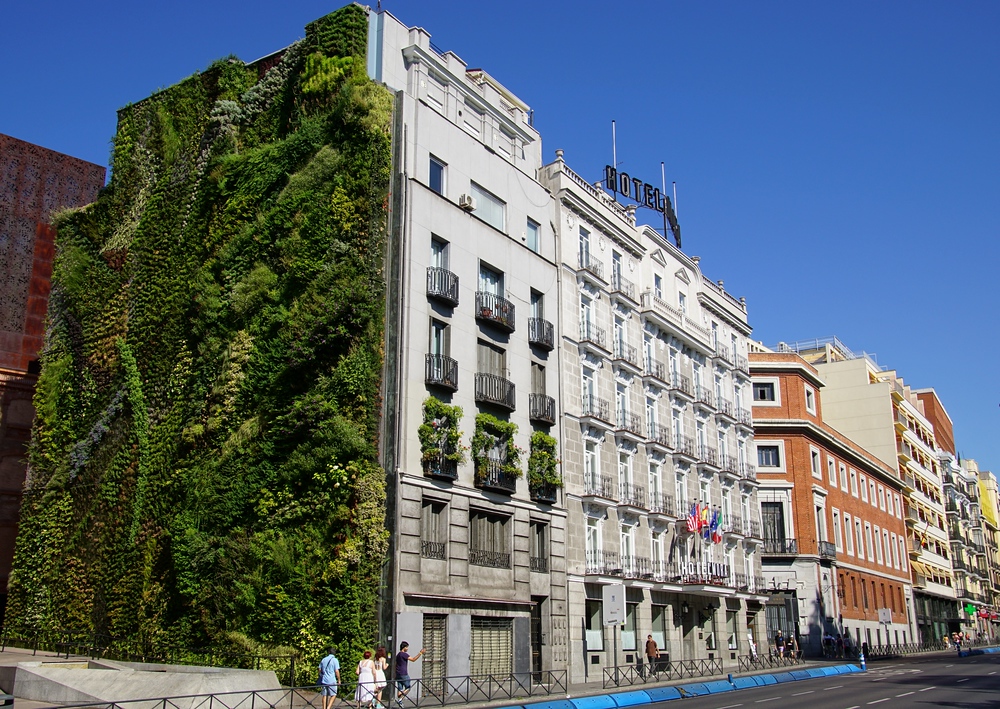

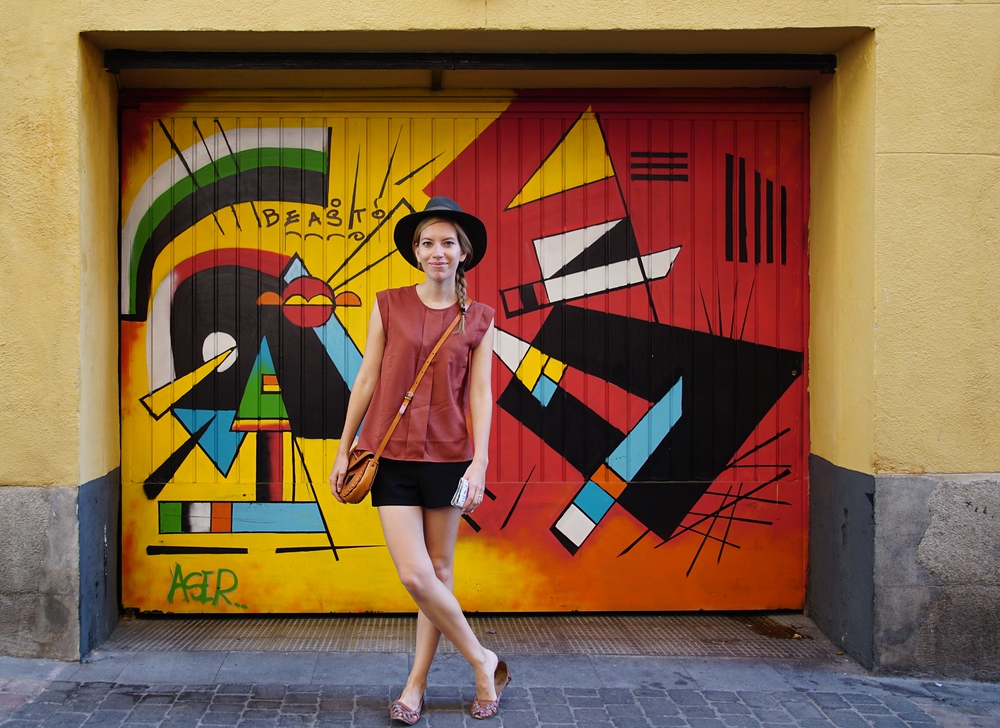

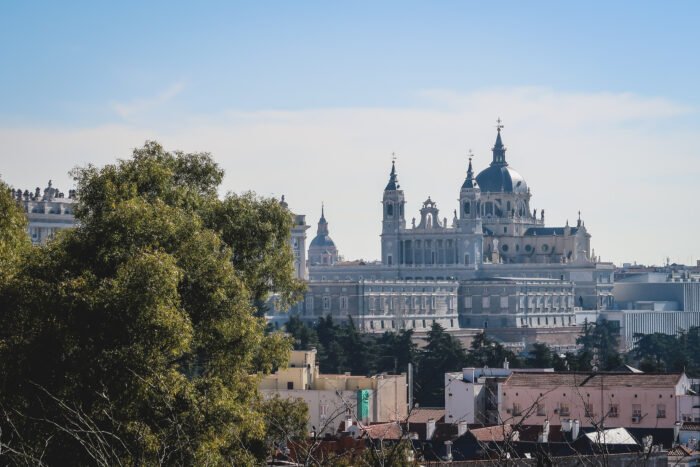
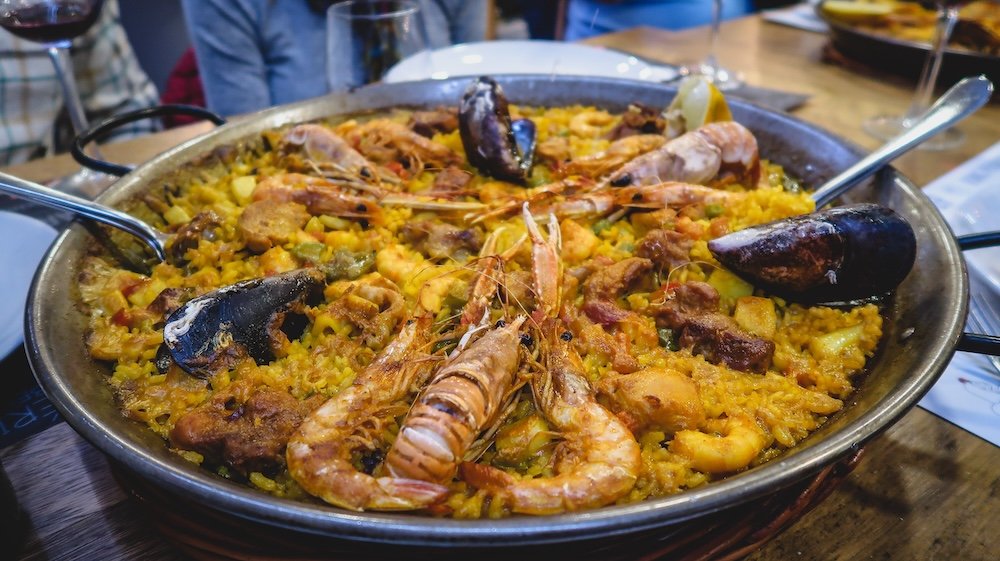
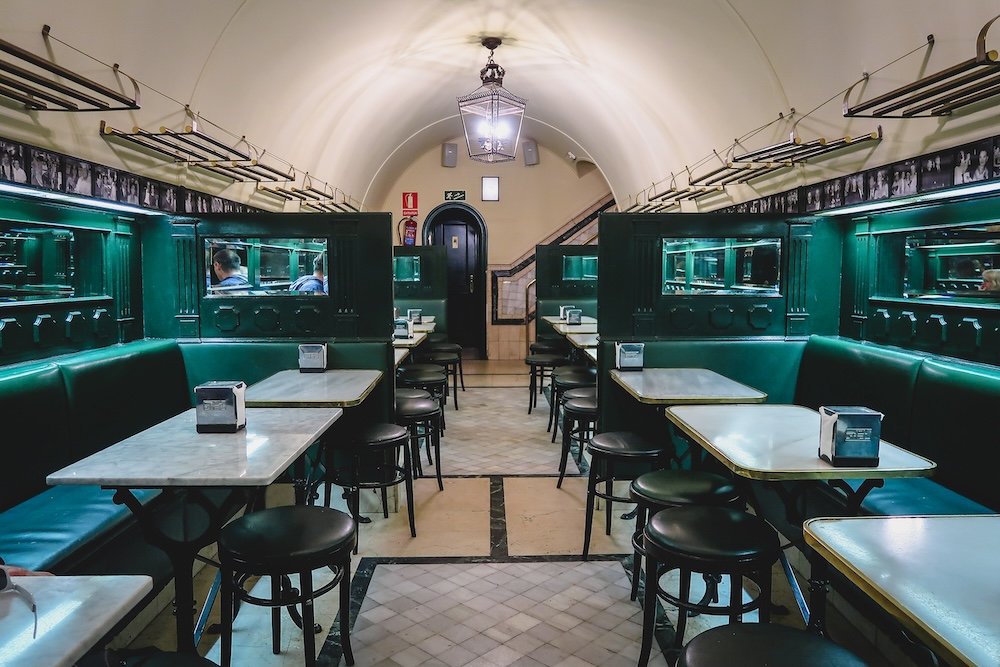
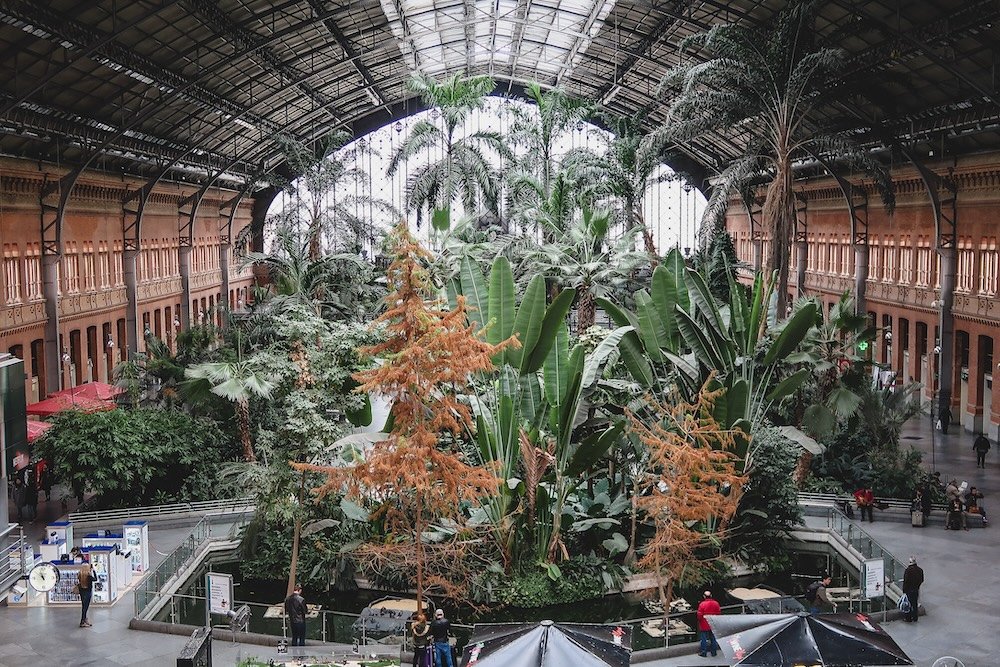
Getting to Know Madrid Beyond the Big Attractions
At first Madrid is all about the Prado, Retiro, Plaza Mayor, and churros. But give it a few days and the real city begins to reveal itself — the neighbourhoods where locals linger over coffee, the leafy streets that suddenly appear out of nowhere, the tiny bars that serve tapas like it’s an art form.
Let’s explore the parts that help you plan smarter, travel smoother, and enjoy the city in a way that goes beyond the top 25 sights.
Madrid can be busy, intense, and hot as an oven in summer, but it’s also one of the easiest capitals to navigate once you understand the vibe — slow days, late nights, and a rhythm that pulls you in before you even realize it.
Where to Stay in Madrid: Picking Your Perfect Base
Madrid’s neighbourhoods each have a distinct personality. Choosing the right home base can completely change the feel of your trip.
Here’s a quick decision matrix to help you choose:
Madrid Neighbourhoods Comparison Table
| Neighbourhood | Best For | Vibe | Why Stay Here |
|---|---|---|---|
| Sol / Gran Vía | First-timers | Energetic, central | Walk to major sights; lively day + night |
| Malasaña | Young travellers, nightlife | Hip, alternative | Vintage shops, indie cafés, fun nights out |
| Chueca | Foodies, LGBTQ+ travellers | Stylish, welcoming | Tapas bars, nightlife, trendy restaurants |
| La Latina | Tapas lovers | Traditional, lively | Ideal for bar-hopping; great Sunday market |
| Lavapiés | Cultural travellers | Multicultural, artistic | Galleries, global food, local markets |
| Salamanca | Luxury stays | Elegant, upscale | Boulevards, boutiques, quiet nights |
| Retiro | Families, quiet stays | Residential | Green spaces, local bakeries, peaceful feel |
| Chamberí | Long-term stays | Local, authentic | Great restaurants, slower pace |
If you want atmosphere, food, and walkability, La Latina, Chueca, and Malasaña are excellent picks.
If you want calm evenings and leafy streets, Retiro and Chamberí hit the sweet spot.
Getting Around Madrid Easily
Madrid’s public transit is one of the most efficient in Europe. Once you learn the basics, moving around the city is effortless.
Transport Options Snapshot
| Mode | Best For | Price Range | Pros | Cons |
|---|---|---|---|---|
| Metro | Most travellers | Low | Fast, far-reaching network | Busy at peak hours |
| Bus | Connecting gaps | Low | Good coverage | Slower in traffic |
| Cercanías (Local trains) | Day trips | Low–moderate | Fast to outskirts | Limited for central hotspots |
| Taxi / Rideshare | Late nights, luggage | Moderate–high | Convenient | Pricey |
| Walking | Central sights | Free | Scenic + easy | Can be hot in summer |
| E-scooters / Bikes | Exploring neighbourhoods | Low–moderate | Fun, flexible | Cobbled streets in old zones |
Essential Tips
- Buy a Multi Card (tarjeta multi) and load a 10-trip ticket — it works on metro + bus.
- Metro Line 1, 2, and 3 cover most tourist zones.
- In summer, prioritize metro over walking midday — shade is limited.
Additional Things to Do in Madrid (Beyond the Popular 25)
After you’ve visited the big attractions, you still have a ton of interesting corners to explore. These extra ideas help round out your itinerary with more local, relaxed, and surprising experiences.
1. Wander Around Chamberí’s Ghost Station (Andén 0)
A once-abandoned metro station turned museum, frozen in time since the 1960s. It’s atmospheric, quirky, and a cool way to see how public transit operated decades ago.
2. Explore the Sorolla Museum
Dedicated to Joaquín Sorolla, the “master of light,” this small museum housed in the artist’s former home is a peaceful gem. Beautiful gardens, quiet rooms, and stunning Impressionist-style paintings.
3. Have a Picnic in Casa de Campo
A massive park west of the city — bigger than many capitals. Perfect for lazy afternoons, lakeside walks, or bike rides.
4. Visit Matadero Madrid
A cultural centre in a former slaughterhouse complex. Today it’s full of exhibitions, indie films, workshops, and creative spaces.
5. Go Market-Hopping Beyond San Miguel
San Miguel is iconic, but Madrid’s markets go far beyond that.
Try:
- Mercado de la Cebada — lively, authentic, fewer tourists
- Mercado de San Ildefonso — hip, youthful vibe
- Mercado de Antón Martín — great international food stalls
Eating in Madrid: What to Try (and Where to Focus)
Madrid’s food scene is much bigger than tapas. This is a city where you can eat endlessly — and affordably — if you know where to look.
Must-Try Dishes by Category
| Category | Dish | Why Try It |
|---|---|---|
| Breakfast | Tortilla, churros, tostada con tomate | Simple, local, filling |
| Lunch | Cocido madrileño, bocadillo de calamares | Madrid classics |
| Dinner | Gambas al ajillo, croquetas, huevos rotos | Tapas heaven |
| Drinks | Tinto de verano, vermut, caña | Refreshing + cheap |
| Dessert | Flan, arroz con leche, rosquillas | Traditional sweets |
Types of Eating Experiences
Casual & Cheap
- Cafeterías
- Tapas bars
- Menu del día restaurants (huge portions!)
Classic Madrid
- Traditional taverns around La Latina
- Rustic bars near Plaza Mayor (avoid the overpriced ones directly on the square)
Modern + Hip
- Fusion spots in Malasaña
- Trendy restaurants in Chueca
- Craft beer bars and natural wine taverns in Lavapiés
Aperitivo Culture
Between 12:30–14:30, locals sip vermouth and snack on olives, chips, and small tapas. It’s the perfect pre-lunch ritual.
What Things Cost in Madrid (Realistic Budget Ranges)
Madrid is unbelievably affordable for a European capital. Here’s what you can expect:
Daily Expense Table
| Category | Budget | Mid-Range | Higher-End |
|---|---|---|---|
| Meals | €10–€20 | €25–€40 | €50+ |
| Accommodation | €40–€70 | €80–€150 | €180+ |
| Transit | €1.50–€7/day | €7–€20 | €20+ |
| Drinks | €1–€3 | €3–€6 | €7+ |
Notes
- Tapas portions are big, so you don’t need as many plates as you’d think.
- Menu del día (weekday lunch menu) is the best deal in the city.
- Markets like Antón Martín and Cebada are perfect for cheap eats.
When to Visit Madrid: Season-by-Season Breakdown
Madrid is a year-round destination. Yet, each season has a different feel.
Season Comparison Matrix
| Season | Weather | Best For | Pros | Cons |
|---|---|---|---|---|
| Spring (Mar–May) | Mild, sunny | Sightseeing | Flowers, patios, festivals | Could be busy around Easter |
| Summer (Jun–Aug) | Very hot | Nightlife | Late dinners, long evenings | Midday heat is intense |
| Autumn (Sep–Nov) | Perfect | Food, culture | Best weather; cozy evenings | Popular season |
| Winter (Dec–Feb) | Cool, crisp | Museums | Quiet, great deals | Shorter days |
If you want comfort + atmosphere, autumn is unbeatable.
If you want nightlife + late dinners outdoors, summer gives you that classic Madrid buzz.
More Neighbourhoods to Explore (With Specific Vibes)
A lot of travellers only scratch the surface. These brief neighbourhood breakdowns help you explore Madrid more naturally.
La Latina
- Perfect for bar-hopping
- Famous for El Rastro, the Sunday flea market
- Best tapas streets: Cava Baja + Cava Alta
Great in early evenings when the whole neighbourhood seems to spill into the streets.
Lavapiés
- Madrid’s most multicultural neighbourhood
- Global food (Indian, Senegalese, Moroccan, Latin American)
- Indie galleries + creative spaces
If you like neighbourhoods with an edge, Lavapiés delivers.
Malasaña
- Vintage shops
- Street art
- Craft beer bars
- Hip cafés
Imagine a mashup of alternative London + sunny Spain.
Chueca
- Stylish, welcoming, lively
- Some of the best restaurants in the city
- Fun nightlife but not chaotic
Chueca is where you go when you want tapas, wine, and a lively but not wild night.
Retiro
- Quiet, leafy, relaxing
- Steps from the park
- Great for families or low-key stays
Morning joggers, peaceful cafés, and easy metro access.
Madrid Sample Itineraries (1–3 Days)
Let’s use these mini-itineraries to help build real plans.
1-Day “Classic Madrid” Itinerary
Morning
- Puerta del Sol
- Plaza Mayor
- San Miguel Market snack
- Walk to Palacio Real + gardens
Afternoon
- Head to Retiro
- Visit Crystal Palace
- Rowboat on the lake
Evening
- Sunset at Temple of Debod
- Tapas in La Latina
2-Day Madrid Food + Culture Itinerary
Day 1
- Chocolatería for churros breakfast
- Prado highlights tour
- Lunch menu del día
- Retiro stroll + Crystal Palace
- Aperitivo in Chueca
- Dinner in La Latina
Day 2
- Sorolla Museum
- Explore Malasaña
- Vintage shops + coffee
- Sunset drinks near Gran Vía
- Flamenco show or live music
3-Day Neighbourhood-Focused Itinerary
Day 1: Old Madrid + Royal Palace
Day 2: Chueca + Malasaña
Day 3: Lavapiés + Retiro
This gives you a full, balanced view of the city without rushing.
Useful Day Trips from Madrid
Once you’ve seen Madrid thoroughly, the region offers several easy day trips:
Best Day Trips Decision Matrix
| Destination | Travel Time | Best For | Highlights |
|---|---|---|---|
| Toledo | 33–40 min | History lovers | Medieval city, cathedral, viewpoints |
| Segovia | 28 min | Architecture | Roman aqueduct, castle, roast suckling pig |
| Ávila | 1 hr | Photographers | Walled city, lit-up ramparts |
| El Escorial | 1 hr | Culture | Monastery, palace, library |
| Aranjuez | 45 min | Garden lovers | Royal gardens, palaces |
Toledo and Segovia are the easiest and most spectacular for first-time visitors.
Essential Tips for Enjoying Madrid Like a Local
- Eat late. Lunch around 2 p.m., dinner around 9–10 p.m.
- Always order the croquetas. Every bar has them, and some are mind-blowingly good.
- Stand at the bar. In many tapas places you pay less when standing.
- Carry a water bottle. Madrid summers are no joke.
- Don’t overschedule. Madrid rewards slow, relaxed days.
- Take a siesta-style break. Even if you don’t nap, mid-afternoon downtime is key.
- Use terrace culture. Madrid is all about outdoor cafés, especially in the evening.
Common Mistakes to Avoid in Madrid
- Only eating in tourist hotspots. Walk two blocks away and prices drop dramatically.
- Skipping reservations. Popular tapas bars get crowded fast.
- Underestimating heat. Midday sun in summer feels like a furnace.
- Thinking Madrid is like Barcelona. It’s not — Madrid is more traditional, more local.
- Rushing museums. The big ones deserve time.
- Missing the nightlife. Even if you don’t party, Madrid evenings are magic.
A Few Extra Local Moments Worth Experiencing
- Grab an evening vermouth in La Latina.
- Watch the city light up from a rooftop terrace.
- Wander aimlessly through Retiro on a weekday morning.
- Visit a neighbourhood bakery for fresh pastries.
- Stand at the bar with a caña and a free tapa — a very local ritual.
Essential Questions About Visiting Madrid: Practical Answers, Local Tips & Trip-Planning Advice
How many days do you really need in Madrid for a first visit?
Three. That is the sweet spot for most first-time visitors who want to see the big-hitting sights without feeling rushed. With three full days you can cover the historic centre, at least one or two major museums, Retiro Park, a sunset at Temple of Debod, and squeeze in a proper tapas night.
If you are into slower travel or want to add a day trip to Toledo or Segovia, I would bump that to four or five nights. That gives you time for neighbourhood wandering in places like Malasaña, Chueca, and La Latina without feeling like you are sprinting from sight to sight.
What is the best time of year to visit Madrid for comfortable weather and fewer crowds?
It depends. Spring and autumn are usually the best balance of pleasant weather and manageable crowds. March to May brings blooming parks and cool but comfortable temperatures, while late September through November tends to have clear days, cozy evenings, and a more relaxed feel.
Summer in Madrid is all about late-night terrace culture, long evenings outdoors, and buzzing nightlife, but the midday heat can be intense, especially in July and August. If you come then, plan long siesta-style breaks. Winter is cooler and quieter, which is great if you are happy to focus on museums, food, and city strolls in a coat rather than park picnics.
Which Madrid neighbourhood is the best area to stay in for first-time visitors?
Honestly, you cannot go too wrong in the central belt, but I usually suggest Sol or Gran Vía if you want to walk to most major sights and do not mind some noise and crowds. You will be in the thick of it and can reach the Royal Palace, Plaza Mayor, and Prado area easily.
La Latina is fantastic if tapas and evenings out are a priority, with narrow streets full of bars and the El Rastro market on Sundays. Chueca and Malasaña are ideal if you like a mix of food, nightlife, and cool local spots. For something calmer and more residential, Retiro or Chamberí give you leafy streets, local bakeries, and quieter nights while still being well connected by metro.
Do you need to speak Spanish to get by in Madrid as a visitor?
Nope. You can definitely get by with basic English in the main tourist areas, museums, hotels, and many restaurants. Staff in central zones are used to visitors and usually manage at least a basic level of English.
That said, knowing a handful of Spanish phrases goes a long way in local bars, markets, and neighbourhood joints. Even simple words like hola, por favor, gracias, la cuenta and buenas tardes tend to unlock warmer interactions and better experiences, especially away from the busiest tourist zones. A small phrase list on your phone is more useful than you might think.
How safe is Madrid for tourists and what should I watch out for?
Overall, Madrid feels very safe for most travellers, even at night in the central areas. I have walked around late in the evening and felt comfortable, especially in busy neighbourhoods like La Latina, Chueca, and around Gran Vía.
The main thing to watch out for is petty theft, especially pickpockets around crowded metro stations, Puerta del Sol, Plaza Mayor, and busy markets or events. Keep valuables zipped away, avoid leaving your phone on cafe tables, and be wary of classic distractions like people bumping into you or trying to get your attention with petitions or trinkets. If you use common sense big-city habits, you are unlikely to have issues.
Is Madrid walkable or do you really need to use the metro and buses?
Yes. The central core of Madrid is very walkable, and you will probably cover a lot of ground on foot between Puerta del Sol, Plaza Mayor, Gran Vía, the Royal Palace, and Retiro. Wandering is half the fun here, especially in older neighbourhoods with narrow streets and random plazas.
That said, the city is bigger than it first looks on a map, and your feet will feel it after a full sightseeing day. For longer hops, hot midday hours, or evenings when your legs are done, the metro is fast, cheap, and easy. I like to walk one direction and then use public transport to get back when I am tired, rather than forcing everything on foot.
What is the easiest way to get from Madrid airport into the city centre?
Simple. You have three main options: metro, Cercanías commuter train, or taxi/rideshare. The metro connects the airport with the city network and is budget friendly, though it usually involves at least one or two line changes and some stairs in older stations.
The Cercanías train from Terminal 4 is very handy if you are staying near Atocha, Recoletos, or Nuevos Ministerios, and it is quick and comfortable. Official taxis and app-based rides are the most convenient if you have heavy luggage or arrive late at night, and there is a flat fare for the airport into central Madrid. I would pick based on your arrival time, budget, and how much luggage you are juggling rather than chasing the absolute cheapest option.
Do you need a transport pass in Madrid or is pay-as-you-go enough?
It depends on how intensively you plan to move around. If you are packing in lots of sights in different neighbourhoods each day, a tourist travel pass with unlimited rides for one to several days can be good value and saves you thinking about individual tickets.
If you are staying central and mostly walking, loading a rechargeable card with a 10-trip ticket and topping up when needed is usually cheaper. I normally mix plenty of walking with a handful of metro rides each day, so a 10-trip bundle works perfectly and keeps costs low without the commitment of a full pass.
How expensive is Madrid compared with other big European capitals?
Surprisingly affordable. Compared with cities like Paris, London, or even Barcelona, Madrid feels kind on the wallet, especially for food and everyday expenses. You can eat very well on a mid-range budget thanks to menu del día lunches, generous tapas portions, and local bars where a drink often comes with a free snack.
Accommodation is where prices climb fastest, especially in peak season, around major holidays, or during big events. Still, you can often find decent central options if you book ahead. Public transport is good value, and many of the best experiences in Madrid—parks, plazas, neighbourhood strolls, and market browsing—are either free or very low cost.
Is Madrid a good city to visit with kids or as a family trip?
Yes. Madrid works really well for families if you pace things sensibly. Big green spaces like Retiro and Casa de Campo give kids room to run around, boats on the lake are always a hit, and the Teleférico cable car or the zoo can easily become a highlight.
The main thing is to build in shade, playgrounds, and ice-cream breaks in summer, and to avoid planning every day around long museum sessions back-to-back. Central neighbourhoods like Retiro or Chamberí often feel more relaxed and family friendly than the busiest nightlife zones. Many restaurants are casual and used to families, especially at lunchtime.
What should I pack for Madrid in summer versus winter?
Summer: think light, breathable clothing, comfortable walking shoes or sandals, a hat, sunglasses, and something you do not mind getting a bit sweaty in. The midday sun is strong, so sunscreen and a refillable water bottle are musts. Many indoor spaces have strong air conditioning, so a light layer for evenings, trains, or cinemas does not hurt.
Winter: bring a warm jacket, layers, closed shoes, and something waterproof just in case. Madrid is not as cold as northern Europe, but mornings and evenings can be chilly and you will still be outside a lot. Year-round I always pack at least one slightly nicer outfit for evenings out, since the city dresses fairly well at night compared to ultra-casual beach destinations.
Is it worth doing day trips from Madrid and which one should I pick first?
Absolutely. Madrid is a fantastic base for easy day trips by train. Toledo is usually my first pick for a classic medieval city on a hill with dramatic views, a beautiful cathedral, and winding streets that feel straight out of another era.
Segovia is a close second thanks to its Roman aqueduct, fairy-tale castle, and roast suckling pig if you are into local food traditions. If you have more time, Ávila, El Escorial, and Aranjuez are also great options. For a short visit I would choose one day trip and keep the rest of your time in Madrid itself so you do not feel rushed.
Do I need to book Madrid attractions and restaurants in advance?
Sometimes. For the biggest museums, popular flamenco shows, rooftop bars, and very in-demand restaurants, advance booking is a smart move, especially in spring, autumn, and on summer weekends. Buying timed museum tickets online can save you from long queues and guarantee your preferred day.
For casual tapas bars and local spots, you can usually just show up, though you may need to wait or stand at the bar at peak hours. If there is a specific place you really care about, I would always check if reservations are possible and grab a spot, then leave the rest of your meals more flexible.
What local food mistakes do visitors in Madrid often make?
The big one is eating too early in empty restaurants aimed squarely at tourists. Locals eat lunch later and dinner much later, so you will get a completely different atmosphere if you shift your schedule and join them. Another common mistake is only ordering the famous dishes and skipping daily specials scribbled on the chalkboard.
People also sometimes stick to the first busy place they see near a big square instead of walking a few blocks into side streets where prices drop and quality often rises. Finally, many travellers fill up too much at one spot instead of hopping between bars and sharing plates. Give yourself permission to wander, order smaller rounds, and follow your nose.
Is Madrid’s nightlife only for hardcore partiers or can you enjoy it in a more relaxed way?
Not really. You do not need to be out until 6 a.m. in a club to enjoy Madrid’s nightlife. A huge part of the evening culture is simply strolling, grabbing tapas, and enjoying a drink on a terrace while the city buzzes around you.
If you want a more laid-back night, focus on neighbourhoods like La Latina, Chueca, or Malasaña and treat the evening as a moving feast—tapas in one place, a glass of vermouth in another, maybe dessert or a late coffee somewhere else. You can always duck out earlier and still feel like you have tapped into that Madrid energy.
Is Madrid a good base if I am more into museums and culture than nightlife?
Absolutely. Madrid’s “Golden Triangle of Art”—the Prado, Reina Sofía, and Thyssen-Bornemisza—alone can keep culture lovers busy for days. Add in places like the Sorolla Museum, smaller galleries, theatre, and live music, and you have more than enough to fill an itinerary without ever going clubbing.
The beauty of Madrid is that you can lean into whichever side of the city fits you best. Stay near Retiro, Paseo del Prado, or Chamberí, and your days can revolve around museums, long lunches, park strolls, and maybe a quiet wine bar in the evening rather than the wildest nightlife spots.
How accessible is Madrid for travellers with limited mobility?
Mixed, but improving. Many of the main museums and modern public buildings are well equipped with ramps, lifts, and accessible bathrooms. Several metro stations have lifts and escalators, but not all of them do, especially in older parts of the network, so you need to check station info when planning a route.
The historic centre is full of cobblestones, narrow sidewalks, and occasional hills, which can be tiring if you use a wheelchair or have reduced mobility. In that case, staying close to the areas you most want to explore and using taxis or accessible transport for the longest stretches can make the trip much more comfortable.
What is the biggest mistake people make when planning a Madrid itinerary?
Trying to do everything. Madrid rewards a slower rhythm—long lunches, park breaks, late dinners, evening strolls—and that gets lost if every hour is packed with “musts”. If you cram in too many day trips, back-to-back museum marathons, and restless nights, you will reach the end of your stay exhausted instead of energized.
My advice is to pick a few anchor experiences each day (maybe one big sight, one neighbourhood, and one special meal) and leave generous gaps for wandering, coffee breaks, and random discoveries. The things you do not plan often become your favourite Madrid memories.
Madrid Final Thoughts
Madrid rewards you for slowing down, soaking up the atmosphere, and leaning into the city’s late-night, late-morning lifestyle. And once you get used to the rhythm? It’s addictive.
Madrid was a city that really clicked with me. Unlike most cities, where I’m happy visit and the leave, Madrid felt more like a place where I could potentially settle as a base. I really enjoyed the laid back culture, impressive architecture and plethora of green spaces. Had the temperature been cooler (we visited in the dead of summer) I could imagine myself going jogging most mornings, having a leisurely breakfast and then a nice long siesta in the afternoon. It is a city where nightlife is second to none.
Even though I don’t tend to party hard I could envision myself going out more often than normal. Another very appealing aspect is just how affordable it is. Restaurant meals won’t set you back an arm and a leg. Furthermore, groceries are reasonable. As an example, I could pickup a container of red wine for less than a Euro, a pack of chorizo meat for the same price and come home with several full grocery bags without spending more than 20 Euros total.
And that is a wrap of our time in Madrid! We had a splendid time and were truly sad to say goodbye to the city, but that just means we’ll have to come back again. If you have any travel tips for Madrid, feel free to share those in the comments below.


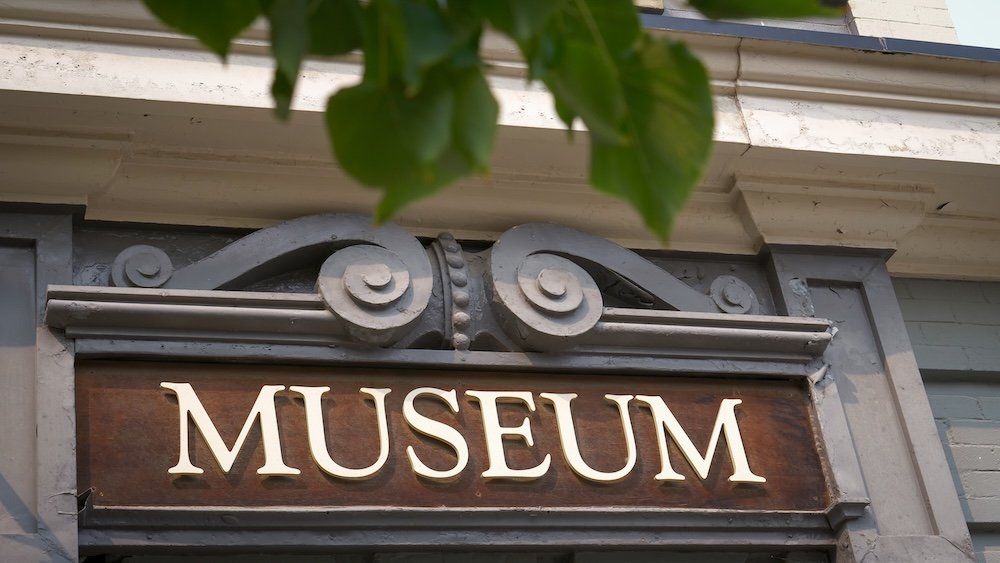

He estado en Madrid durante dos años ! Espectacular! ¡Lindas fotos!
Madrid is a increible city. Excellent post to do in Madrid.
Having lived in Madrid for 6 months I don’t think I went to all those places which is a real bummer. I’m living in Barcelona now but thanks to your guide maybe I’ll pay a visit to the ones I haven’t been in a near future 🙂
If you end up in Madrid on a Sunday they have an amazing Sunday Market at El Rastro. Some of it is cheap junk, but there are some really interesting Spanish stalls and shops, too. If you go down some of the little side streets, there are antique shops which give you a great insight into what Spain was like in the 40’s, 50’s and 60’s.
There’s also a tiny little restaurant called Ataca Paca that serves Sunday Tapas, but you get a free bottle of Red Wine with it. Just make sure you remember your way back to the hostel for a nap.
Excellent post, I really enjoyed this article.
Thanks for sharing such useful information. great list and amazing photos!!!
Such colorful and beautiful places! i really love it…
Great share, this post can be make a reference to travel to madrid.
thanks you
I traveled to Barcelona, Marbella, Sevilla, Malaga, Torremolinos but i did not had a chance to stop in Madrid. I did love Spain very much. All the tapas, the wine, the old cities, the friends i ve made over there. I see this article and i feel that is the time to return and enjoy Madri and other cities that we could visit yet. But, this year of 2016 is the year of the Olympic Games in Rio and we need to go to Rio to enjoy that, but, 2017 we hope to be back to the lovely Spain.
Thanks for the tips.
Tchau from Mister Brazil Travels
Great list! I’m a huge fan of tortilla española so I love to see it in articles like this one. There are also some great day trips from Madrid: Toledo is beautiful, Segovia has a spectacular aqueduct, and Alcalá de Henares is great for tapas and history.
Loved this post! Madrid has been on my bucket list for a while now. My father’s family is from Spain and I’ve always wanted to get out there. Thanks for all the info!
We only got to stay in Madrid a short time for only 4 days, but it is definitely a city that deserves more attention and we will be going back for an extended visit next year. Thanks for a great lit of thing to see and do. We did an excellent food tour and would highly recommend it to others that visit Madrid.
Not just Madrid is so nice but the people in this city is so friendly
Thrilling!
I’ve been to Madrid years ago and I love it a lot! It is among my favourite European destinations and I just adore its architecture. Too bad it has no sea/ocean shore… but still, it’s fantastic!
Nice photos, by the way…
Delightful
Hala Madrid!!!
Gracias por compartir… great list and amazing photos!!!
Such colorful and beautiful places! i love it………i will try to my best for go to in Madrid………
Que viva España. Never a dull moment. It is so cosmopilitan there yet the energy of its history resonates in its architecture and stories people will tell over a glass of sangria!
Hello Samuel,
My husband and I are travel enthusiasts and I have been pestering him to book a vacation to Madrid. Your blog was one the coaxing methods I used and he agreed after reading through your list of things to do in Madrid. Thank you so much for the pointers.
Great post of things to do in Madrid !!! i recomend always to go their increidible food and people
Madrid is a wonderful city, when I was there I met some wonderful sights. I will never forget the seven days I spent it. I was homesick. Many thanks for the memories.
Thanks for sharing such useful information, I’ll remember it when I have to travel there from Chile next month. I loved the images, besides Spain is a place that offers so many interesting places for sightseeing, and each has its own charms, starting with Madrid.
That Gazpacho looks so yum! What is that accent? Are you guys Canadian? 🙂
Guess that spanish omelette was really good! Lovely photos Sam! I made it out to Spain several years ago and Madrid was a beautiful and quiet city full of tradtion, but i had an absolutely hard time eating it. Barcelona was friendlier to the vegetarian diet. But Madrid is beautiful!
Excellent post, I really enjoyed this article.
Madrid appeals to me more than Barcelona. It looks like a dainty city. And as you mentioned, it’s a place where you’d want to go for morning jogs, take after siestas…I guess I would like to visit it.
Wow this list couldn’t have come at a better time for me, as I’ll be in Madrid in two weeks and have no idea what to do! One thing I do know is that I will spend most of my waking minutes there eating and drinking. Thanks!
wife & I spent 8 weeks in Cuenca neighborhood in Spanish Immersion program & agree..Madrid is d’BOMB! Museos..food..people..art. Cheap eats for sure. Glad u two enjoyed. We also line u went to Toledo & spent a weekend via bullet train in Sevilla! Strongly suggest u see Southern España next eh? Also Avila,Salamanca just North of Madrid rocks! Next time we will do Bar-THE-lona! Ciáo! (Bay Area San Fran Stateside)